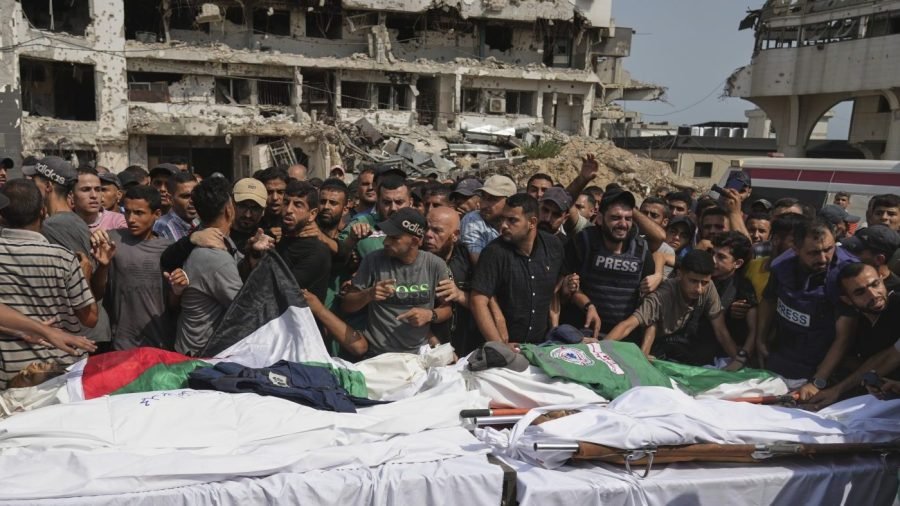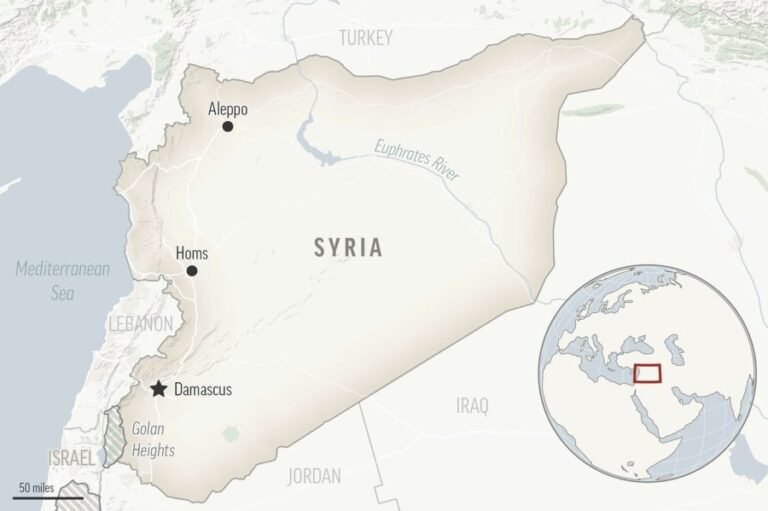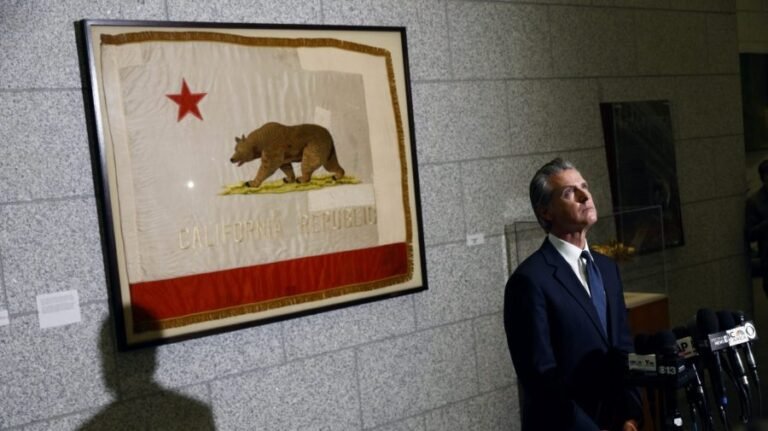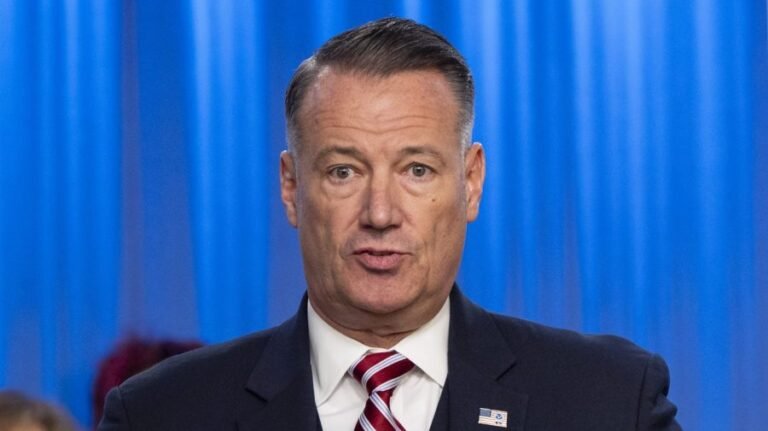
The killing of the well-known Al Jazeera journalist Anas al-Sharif by the Israeli military has become a flashpoint in the global discourse around Gaza. Israel claims that al-Sharif was not only a reporter but a Hamas operative, citing documents that suggested he once received a salary from the group.
Al Jazeera (where I am sometimes interviewed on Middle East developments) rejected the charge, and many observers cast doubt on the evidence Israel produced. Some noted that, even if there was an affiliation, it may have been in the past.
Having served as the Associated Press bureau chief in Jerusalem and later as the agency’s Middle East editor, I have been asked repeatedly what I make of the allegations. The truth is, like many, I don’t know what to believe. Israel has not covered itself in glory with any sort of transparency about its conduct of the war — and that itself is the point.
Israel’s claims about al-Sharif might have some basis. But it is deeply problematic to suggest that past affiliation alone justifies attacking someone who was functioning, at the time, as a journalist. By that logic, most Israeli civilians would be considered legitimate targets by many Palestinians, given the country’s near-universal conscription.
Of course, there is no comparing the army of a democratic state with the terrorist mafia that rules Gaza. But one must acknowledge how such reasoning will be read outside Israel.
For years at AP, we relied mostly on Palestinian staff in Gaza to report stories, take photographs and document events under conditions of exceptional danger. Since the war began almost two years ago, that reliance has become total, because Israel has blocked all foreign journalists from entering the territory, except on heavily stage-managed embeds with the military.
Many of our staffers in Gaza were, in my view, indisputably heroic in their willingness to risk not only the fire raining from the sky but also the ire of Hamas. I rarely had evidence that they were sympathizers of the group; if anything, they tended to be pro-Western and inclined toward the opposite outlook. For one thing, they were loyal colleagues to bosses who, in many cases, were Jews and Israelis in their employer’s Jerusalem bureau.
That said, I will not pretend that Hamas’s rule was not an ever-present reality that had to be calibrated in coverage. During my time, we managed to report on rocket fire from civilian areas, on militants killed in action, on the use of human shields. Contrary to later critics, such as the famously disgruntled former AP staffer Matti Friedman, we did not suppress these facts as a matter of principle.
But was coverage sometimes shaped by the risks our local staff faced? It would be dishonest to deny the possibility — indeed the likelihood.
Here is the larger point: Gaza is in its way singular, but it is also a case study in a global problem.
The enclave is a warzone, a prison and a propaganda lab. Foreign journalists on their embeds see what Israeli military escorts allow and are forbidden from speaking to Palestinians. That this has gone on for almost two years is an extraordinary and somewhat unprecedented situation in modern journalism.
The Foreign Press Association, which I once chaired, has repeatedly petitioned Israeli courts to reverse the ban only to be stonewalled. The military claims it is for safety, and that is not entirely unreasonable. But the consequence is that the world’s understanding of Gaza is mediated either by Palestinian freelancers, working under Hamas’s shadow, or by official Israeli military briefings, often presented by officials granted anonymity for no reason that is justifiable on journalistic or ethical grounds.
Israel has not taken serious steps to find creative ways to allow access, or even to indicate that they have anything but indifference to the fact that this is no way to cover a war.
The press has been in a similar position before. In North Korea, Iran, Cuba, China and Russia (before the Ukraine war and the resulting sanctions regime drove away foreign reporters), journalists operate under government surveillance, restrictions that are sometimes unspoken yet clear, and implied physical threats.
Yet this reality almost is never explained to the reader. The conditions of reporting — the intimidation, the constraints, the lack of access — are treated as footnotes or left unsaid altogether.
How to fix this, what the boilerplate language describing the situation would be, how to handle possible blowback to staff — these are questions that I cannot definitively answer. But this is a discussion that major news organizations must have, preferably banding together, perhaps under the aegis of international journalism organizations.
Absent such steps, the result is a distortion: Audiences think they are receiving unvarnished facts when they are actually consuming stories shaped by fear, access and proximity to power. So this is not just about Gaza. It is about the very definition of journalism.
The analogy I find most apt is to organized crime. When reporters in the U.S. cover the mafia, they know certain doors are closed, certain questions unwise to ask. The threat is rarely stated for attribution.
Hamas operates by similar rules, only on a larger scale. Gaza is run by a militia that jails or kills opponents. Gaza’s civilians are victims of that rule. Gaza’s journalists — which, as said, the media currently depends on exclusively for voices from the ground — are civilians, even if some of Israel’s claims are true.
That does not invalidate the work, but it does mean the media has a responsibility to be transparent about the conditions under which such journalism is produced. Readers deserve to be told that this is not a free press environment. When access is denied, when intimidation is implicit, when the story comes from a place without freedom, that fact is not incidental — it is central.
The coverage of the Gaza war is compromised on both sides. The media cannot be expected to continue putting up with it without taking countermeasures. At a minimum, every significant story should state that foreign journalists have not been allowed into Gaza for almost two years except on tightly controlled embeds.
Moreover, editors should reconsider the use of Israeli military briefings without attribution. The only way to make Israel take notice is for a combined commitment by all accredited journalists — especially all Foreign Press Association members, who are the majority of foreign reporters — to refuse to attend these briefings. This will exact a certain journalistic price, so the media organizations they work for will have to back this and forego a few dubious “scoops,” and the leaders of these outlets need to take the lead and not dump the decision on local reporters.
Gaza is unique in scale, but not in principle. From Moscow to Tehran, journalists are often working in compromised environments. News organizations have tiptoed around this fact for far too long.
Trust in journalism is already cratering — for many reasons. The public needs honesty — not only about what is happening, but about how we know it, and under what conditions we are reporting it.
It is a cliche that truth is the first casualty of war. But it doesn’t have to be. If journalists want to preserve truth, they must start by telling it — not only about the wars they cover, but about the conditions in which they themselves are forced to work.
Dan Perry led Associated Press coverage in Europe, Africa and the Middle East (including Iran, Gaza, Syria and Afghanistan), and chaired the Foreign Press Association for Israel and the Palestinian areas. He publishes Ask Questions Later on Substack.





